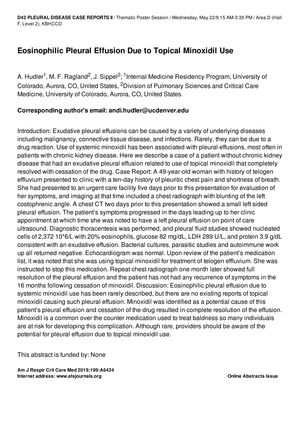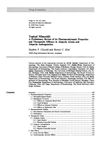Eosinophilic Pleural Effusion Due to Topical Minoxidil Use
May 2019

TLDR A woman's use of minoxidil for hair loss caused fluid buildup in her chest, which went away when she stopped using the product.
In 2019, a case was reported of a 49-year-old woman who developed an exudative eosinophilic pleural effusion, which is an accumulation of fluid with a high percentage of eosinophils in the pleural space, after using topical minoxidil for telogen effluvium, a type of hair loss. The patient did not have chronic kidney disease, which is commonly associated with pleural effusions due to systemic minoxidil use. Her symptoms included pleuritic chest pain and shortness of breath, and diagnostic tests confirmed the nature of the effusion. All other potential causes were ruled out through various tests. Upon cessation of minoxidil, the pleural effusion completely resolved within one month, and the patient remained symptom-free for 16 months thereafter. This case is significant as it is the first reported instance of pleural effusion associated with topical minoxidil use, a widely available over-the-counter medication for hair loss treatment. Healthcare providers should be aware of this potential rare side effect.


